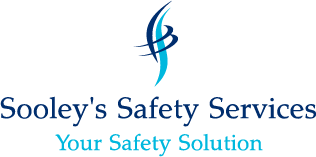What are the Health and Safety Rights of Workers?
One of the fundamental components of the Occupational Health and Safety Act (OHSA) are the rights workers and supervisors have. These fundamental rights ensure workers remain safe and go home at the end of the day. This also helps to ensure the health and safety internal responsibility system is strong in the workplace.
The worker (and supervisor) Health and Safety Rights found in the Occupational Health and Safety Act are:
- The Right to Know
- The Right to Participate
- The Right to Refuse Unsafe Work
Employers are required under the law to ensure that workers are aware of, understand these rights and what each of them means to the worker. Although employers may comply with this, in many instances they do not ensure their workers are aware and understand these rights.
The Right to Know
Workers have the right to know about the hazards and the dangers in the workplace and how to work safely. Prior to beginning a new job or starting a new position in the same company, workers need to be informed of the workplace and job specific hazards and how to perform the job safely. Regardless of experience, every workplace is different and the same process in one facility will differ slightly in another facility. Employers must provide workers with information, instructions and training, which includes a review of written procedures. Hazards need to be explained to workers, along with showing them how to work safely and manage any hazardous situations that may arise. Employers must supervise the workers to ensure they are following the procedures and provide feedback.
The Right to Participate
Workers have the right to participate in health and safety activities at the workplace, which ranges from pointing out hazards in the workplace, participating in inspections, being invited to participate in health and safety meetings and completing their mandatory health and safety training. Volunteering to be a health and safety representative or to be a member of the Joint Health and Safety Committee is another way to participate in health and safety in the workplace.
The Right to Refuse Unsafe Work
Workers have the right to refuse unsafe work if they have reason to believe that it puts them or a fellow worker in danger. If a task puts a worker in danger, they have the right to refuse and an investigation will take place by the worker, supervisor and the health and safety representative for the workers to determine whether the work is suitable and safe. If a consensus cannot be reached, a Ministry of Labour inspector will be called in to assist with finding a solution. A worker who believes that he or she is endangered by workplace violence may also refuse work. When a worker invokes their right to refuse unsafe work, the employer can not punish the worker because of the refusal. Under section 50 of the OHSA, workers are protected from reprisals.
There is a difference in the effectiveness of an employer’s message between telling the worker they have rights and what their rights are and explaining to the worker what their rights are using practical applications based on the current workplace. Using practical applications provides an extraordinarily strong indication the worker understands their rights.
Using the above is a basis to start with when explaining worker rights to your workers. However, employer’s also need to incorporate workplace specific circumstances and a practical component for them to understand. If the worker does not understand their rights and there is an incident, the employer is liable and subject to fines and criminal charges.
If you have questions about whether your workers understand their rights or specific instances in your workplace where you are not sure if you are maintaining your worker’s health and safety rights as stated, please feel free to contact me by visiting my website:
https://sooleyssafetyservices.ca/services/ola/services/online-consultation
REMEMBER, PREVENTION IS BETTER THAN REACTION!







